Marketing your business can get expensive fast. Finding customer acquisition strategies that won’t torch your budget is the smart move—especially when you can turn existing customers into your biggest growth channel.
Acquiring a new customer can often cost significantly more than retaining the ones you already have, so it pays to build systems that drive referrals and repeat purchases.
The good news: you can absolutely attract new customers without spending a fortune.
One of the most effective ways is to use your current customers as a magnet for new ones. It sounds complex, but it’s simpler than you think when you structure it correctly.
It’s about creativity and alignment. Design acquisition plays that also strengthen retention and you’ll get compounding gains.
Don’t underestimate the power of recommendations. Most people trust suggestions from friends and family, and a warm introduction lowers the friction to try your brand.
The question is how to earn that first recommendation—consistently, not just by luck.
If you haven’t leaned into this approach before, no problem. Below are practical steps to turn everyday customers into advocates and lower your acquisition costs in the process.
Here’s what works now.
Start with memorable branding
A memorable brand—clear visuals, a focused message, and a consistent voice—makes customers feel something. When people feel proud to buy from you, they naturally talk about you.
Use your aesthetic to stop the scroll, your message to articulate a single, sharp value proposition, and your voice to sound human and relatable. When these elements are in sync, customers internalize your story and repeat it to others.
As customers build a sense of identity with your brand, they become enthusiastic ambassadors who share purchases, unboxings, and wins—giving you organic reach you couldn’t buy cheaply.
While hiring a branding agency requires an investment, the long-term payoff in loyalty, word-of-mouth, and pricing power is real. Great partners turn customer research into a tight strategy—visual identity, logo, palette, imagery, and messaging that work together everywhere you show up.
DIY or agency, operationalize it: create a one-page brand brief, a lightweight style guide, and a voice chart (what you say / don’t say). Train your team to use them. Consistency is what makes you recognizable—and recommendable.
When done well, your brand forges an emotional connection and gives customers a sense of belonging. People with that bond recommend you without being prompted.
Provide friendly customer service
Before any new campaign, audit your culture—starting with customer service. Friendly, competent support is still one of the fastest ways to drive referrals.
Optimizing the customer experience lifts revenue and acquisition. Consider the data-backed case for customer-friendly operations: people who feel respected and helped are far more likely to recommend you.
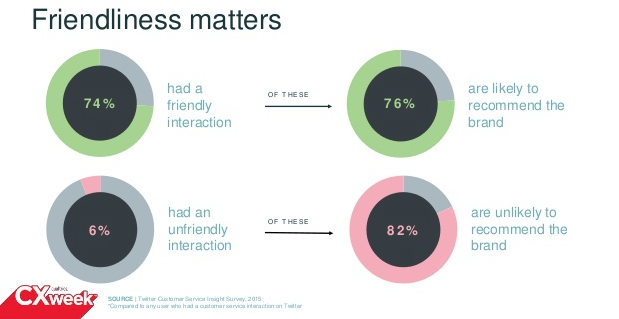
Bottom line: positive interactions get shared; negative ones do, too. Build habits that tip the scales toward delight.
Make friendliness a standard, not a script. Train teams to greet, use names when possible, and acknowledge effort (“Thanks for trying those steps—let’s get this fixed”).
Coach tone and body language. In person, smile. Online or by phone, your energy comes through in pacing and word choice—be warm and concise.
Empower reps to resolve small issues without escalation. A quick fix or small courtesy credit is cheaper than losing a customer and the referrals they would have made.
This isn’t always easy to measure, but it’s noticeable. Treat people well and they’ll tell others; treat them poorly and they’ll tell even more people.
Do this consistently and you’ll see new customers show up by referral—and stick around when they’re treated the same way.
Respond to customer inquiries as fast as possible
Speed matters. A fast, respectful reply can turn a tense moment into a referral—even if the final fix takes longer.
When a customer is upset, resist the urge to debate. Acknowledge, clarify, and own the next step. Make customers feel heard before you present a solution.
Don’t make people wait. Whether you’re in-store, on the phone, via chat, or over email, set and meet response-time targets (e.g., live chat in minutes, email within a business day).
In a physical location, get a manager quickly. On calls, keep holds short and give time estimates. Online, use an autoresponder that confirms receipt and sets expectations while a human follows up.
Put systems behind the promise: route tickets by skill, use saved replies for common issues (personalize them), maintain a searchable help center, and publish a simple status page for known incidents.
Customers value speed even when the fix is complex. A quick “we’re on it” plus regular updates often earns more goodwill than a perfect answer that arrives too late.
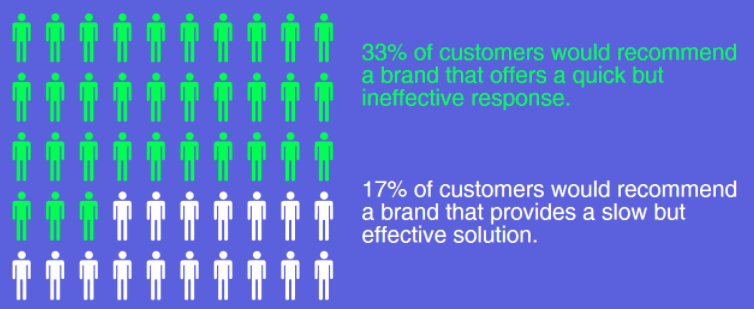
Set SLAs you can keep and make response time a core metric. Fast, empathetic replies turn problems into positive stories people share.
Come up with a referral program
Some customers need a nudge to recommend you. That’s where a referral program shines: it formalizes word-of-mouth and rewards everyone involved.
Customers love perks. Build a simple, transparent referral offer that thanks the advocate and welcomes the friend. Keep the rules short and the reward meaningful.
One widely known example is Uber popularizing “give $X, get $X” credits—double-sided incentives that motivate both the sender and the recipient.
Here’s how that style of program works in practice: the referring customer earns a credit after the friend’s first purchase, and the new customer gets a credit on their first order. Clear, fair, easy to explain.
Rewards vary by market and timing, but here’s an historical example of a $20 credit structure that illustrates the concept:
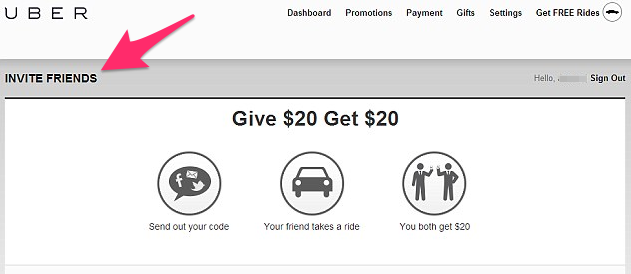
Design yours around your margins and typical order value. A quick sanity check: if first-order gross profit plus a healthy slice of expected repeat profit comfortably exceeds the referral reward and admin costs, you’re good.
Make it easy to share: unique links, QR codes at checkout, and one-tap shares in your app. Add a “Remind me later” nudge post-purchase and a short email/SMS follow-up when the friend converts.
Protect the program with basic guardrails—fraud checks, limits per account, and rewards that trigger only after a qualified purchase. Consider tiered bonuses (e.g., extra perk after 3, 5, 10 referrals) to keep advocates engaged.
Make the reward feel meaningful. Tiny credits rarely motivate action, but a free item, a month free, or a solid dollar amount often does—so long as your economics support it.
Finally, close the loop with gratitude. Send a quick “your friend just joined—thanks!” message and show remaining rewards. Visibility fuels momentum.
Celebrate milestones with your customers
People love being seen. Learn why customers are buying and celebrate their moments when it makes sense.
Ask conversational questions. In a restaurant, a large order might be a birthday or anniversary. For service businesses, a first home, new job, or graduation can be the context. Small gestures—handwritten notes, a modest discount, or a free add-on—can make the experience memorable.
When customers feel celebrated, they post and tag you—often to recommend you to their circle. Those posts carry real weight.
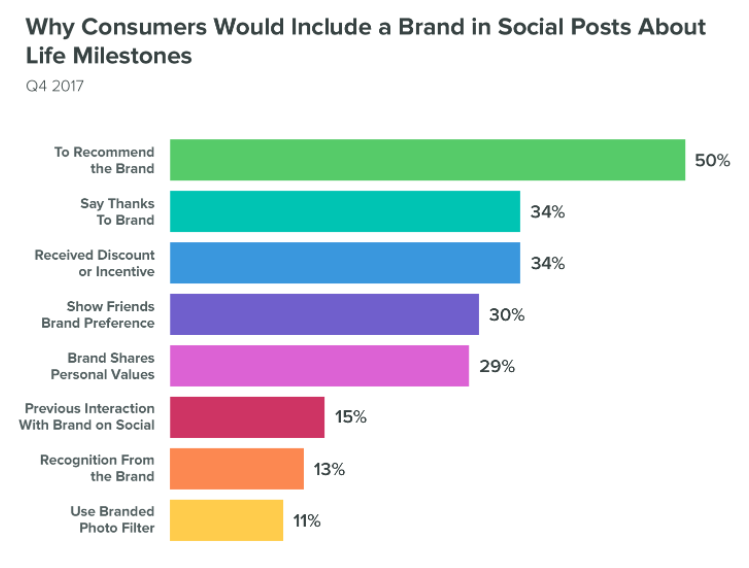
Ecommerce? You can still do this. Add milestone-friendly options at checkout (“Is this a gift?”), include a note field, and offer low-cost surprise-and-delight touches like upgraded gift wrapping.
Which moments matter depends on your industry, but the principle holds: acknowledge the occasion and you increase the odds of a public thank-you and recommendation.
For fashion and retail, train teams to ask:
“Is this for a special occasion?”
If it is—engagement party, first day at a new job—offer thoughtful guidance and a small perk within your margins. Those are the stories customers share.
Even when the post isn’t a direct recommendation, public gratitude, brand preference, and discount shoutouts are all positive signals that nudge their friends toward you.
Keep an eye on the milestones most relevant to your category so your team can recognize and celebrate them well.
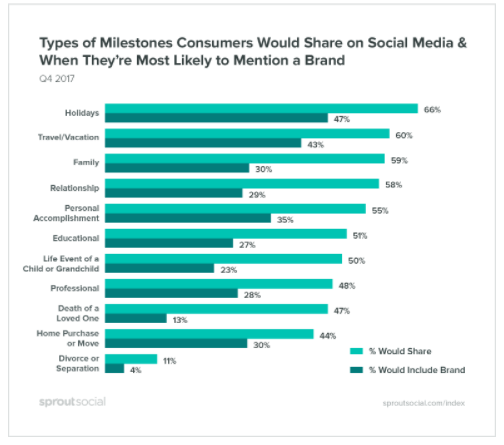
Be intentional here and you’ll spark the kind of social sharing that brings new customers in warm.
Promote user-generated content (UGC)
UGC is low-cost and high trust. Invite customers to create content around your products and you’ll earn reach you couldn’t buy as efficiently.
Make it fun and simple. Give a theme, a brand hashtag, and clear instructions. Feature great submissions on your site and socials to encourage more participation.
Why it works: people trust people. Seeing real customers using your product feels like a recommendation—even when it’s not labeled as one.
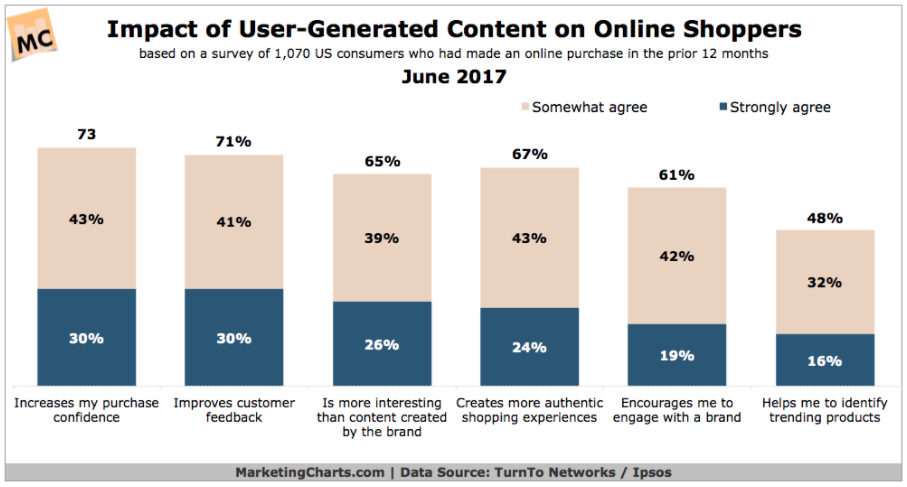
Great formats include social contests (“post your setup, tag us, and use #YourBrand” with a clear prize), before/after reels, and challenges. Pick winners based on engagement or a simple panel—just publish the criteria upfront.
Operational tips: get permission to repost, outline basic content guidelines, moderate for quality, and respond to participants quickly. Add a UGC gallery to your product pages and emails for extra conversion lift.
Done right, UGC exposes your brand to followers of every participant—an indirect but powerful path to recommendation and discovery.
You can also collect stories on your site. Invite customers to share short videos or testimonials about their experience. Curate the best and keep the flow fresh.
Encourage customers to review your business
People expect you to say good things about your company. What really moves them is what other customers say. Make reviews easy and visible.
Set up and complete profiles where your audience actually looks: Google, Facebook, Yelp, and Tripadvisor are common—plus industry-specific sites for your niche. Keep hours, photos, and contact info current.
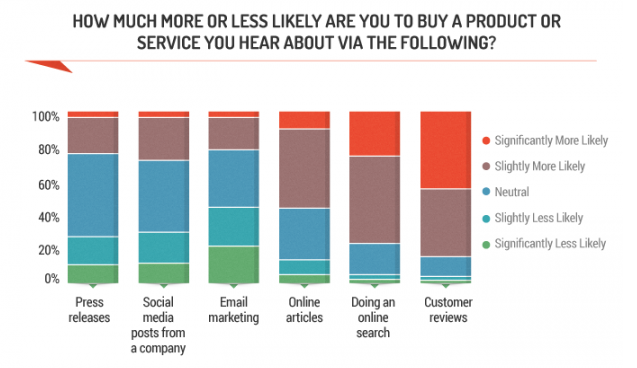
Now, ask—politely and consistently. Trigger a review request after a successful delivery or service completion. Include a short link or QR code on receipts and packaging. Rotate which platform you suggest so your reviews don’t cluster in one place.
Be careful with incentives. Some platforms prohibit offering discounts or rewards in exchange for reviews. When in doubt, skip incentives and simply ask for honest feedback. If you do run feedback programs elsewhere, request a review only where permitted and never require (or imply) a positive rating.
Respond to every review you reasonably can. Thank happy customers and personalize your reply. For negative reviews, acknowledge the issue, explain what you’re doing to fix it, and invite the customer to continue the conversation privately. Future customers read your replies.
The more friction you remove, the more reviews you’ll earn—and the easier it is for new customers to choose you.
Conclusion
If you want lower acquisition costs, build systems that turn customers into advocates.
Start with the basics: consistent, human branding; friendly service; and fast, respectful responses. Those create stories people want to share.
Add structure with a clear referral program that rewards both the advocate and the friend—and protect it with simple guardrails.
Celebrate customer milestones and make it easy for people to show off their moments with you.
Amplify it all with UGC and a healthy review strategy. Ask at the right times, keep profiles current, and respond thoughtfully.
Do these consistently and your current customers will bring the next ones through the door—happier, faster, and at a far lower cost.
